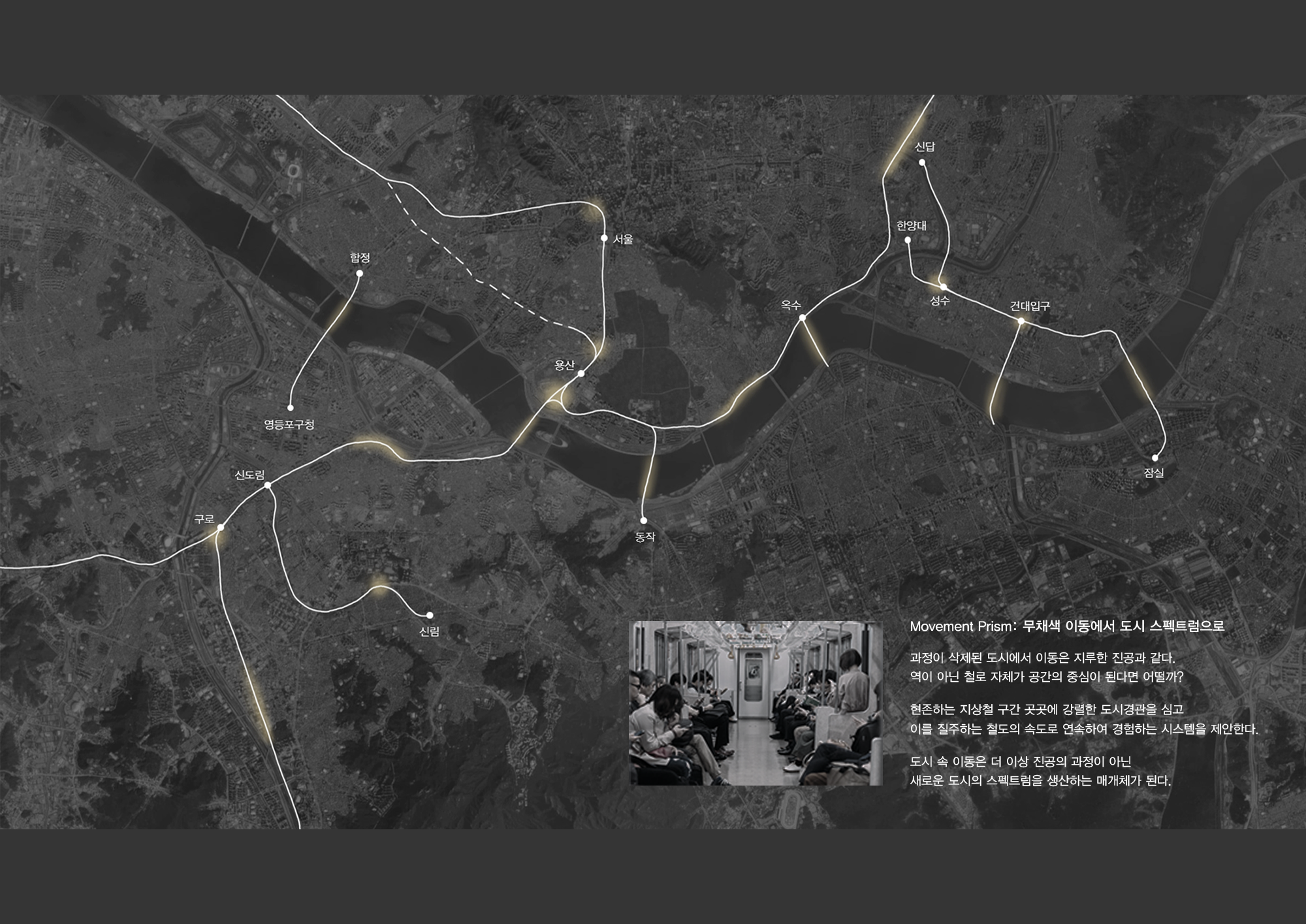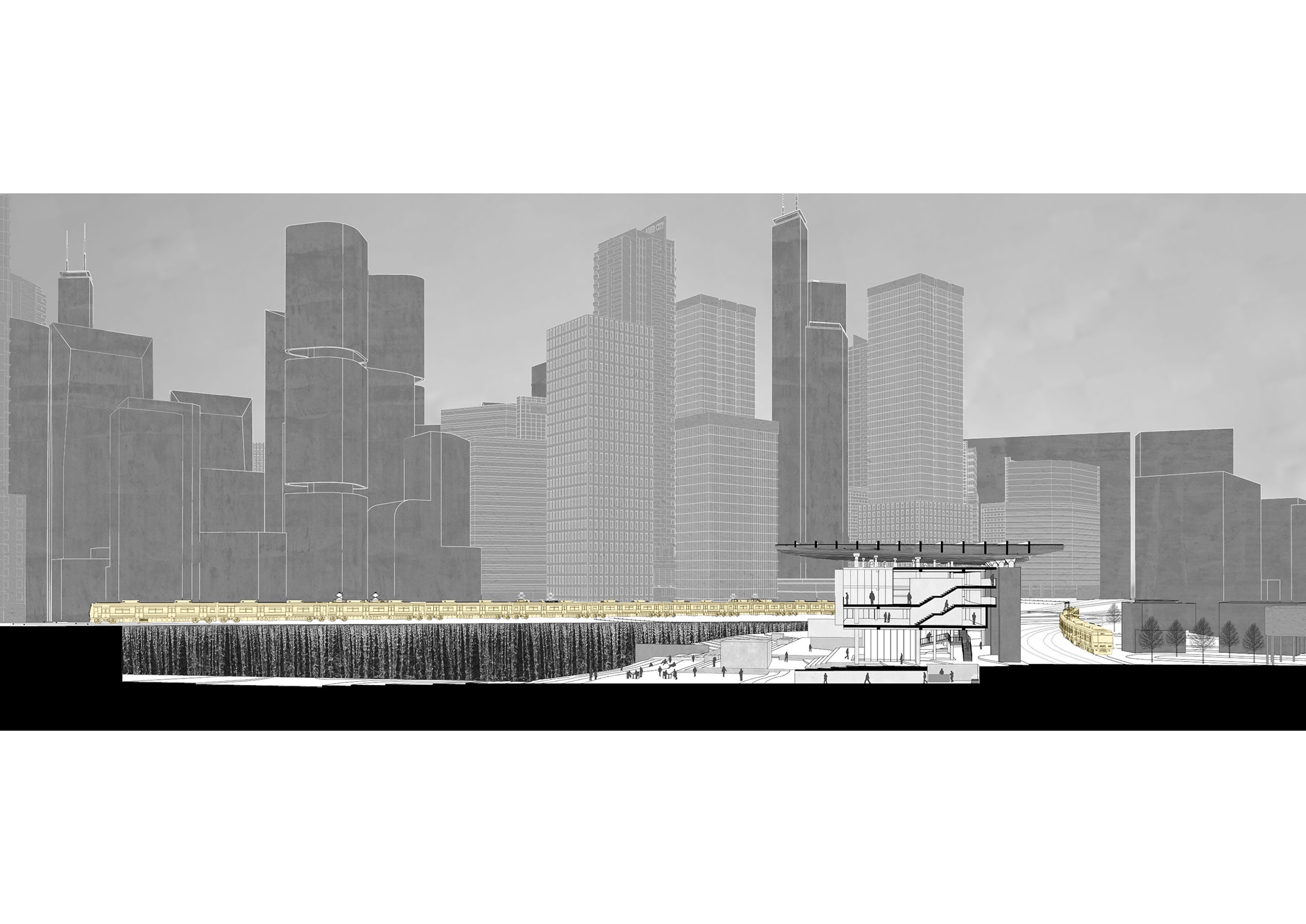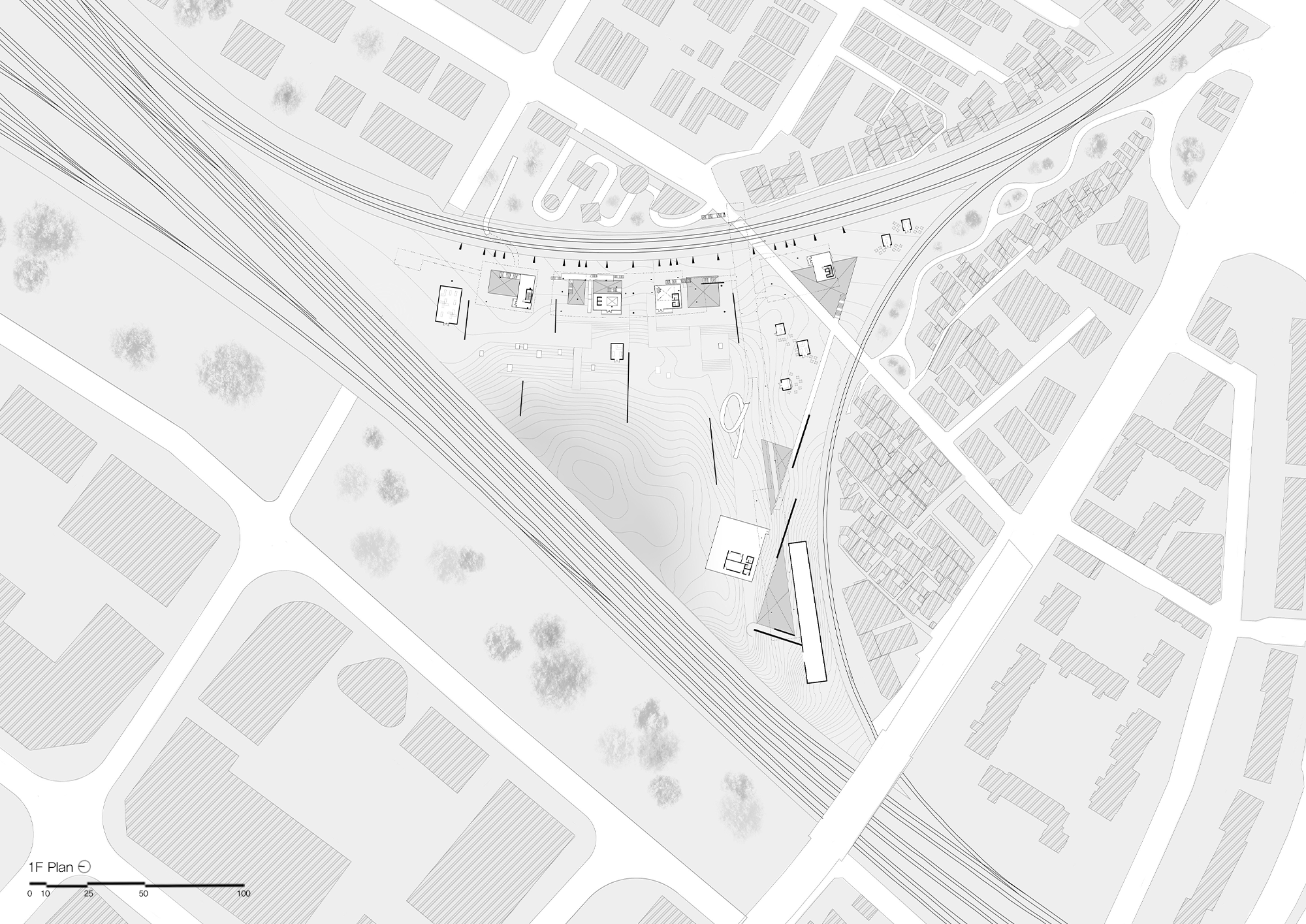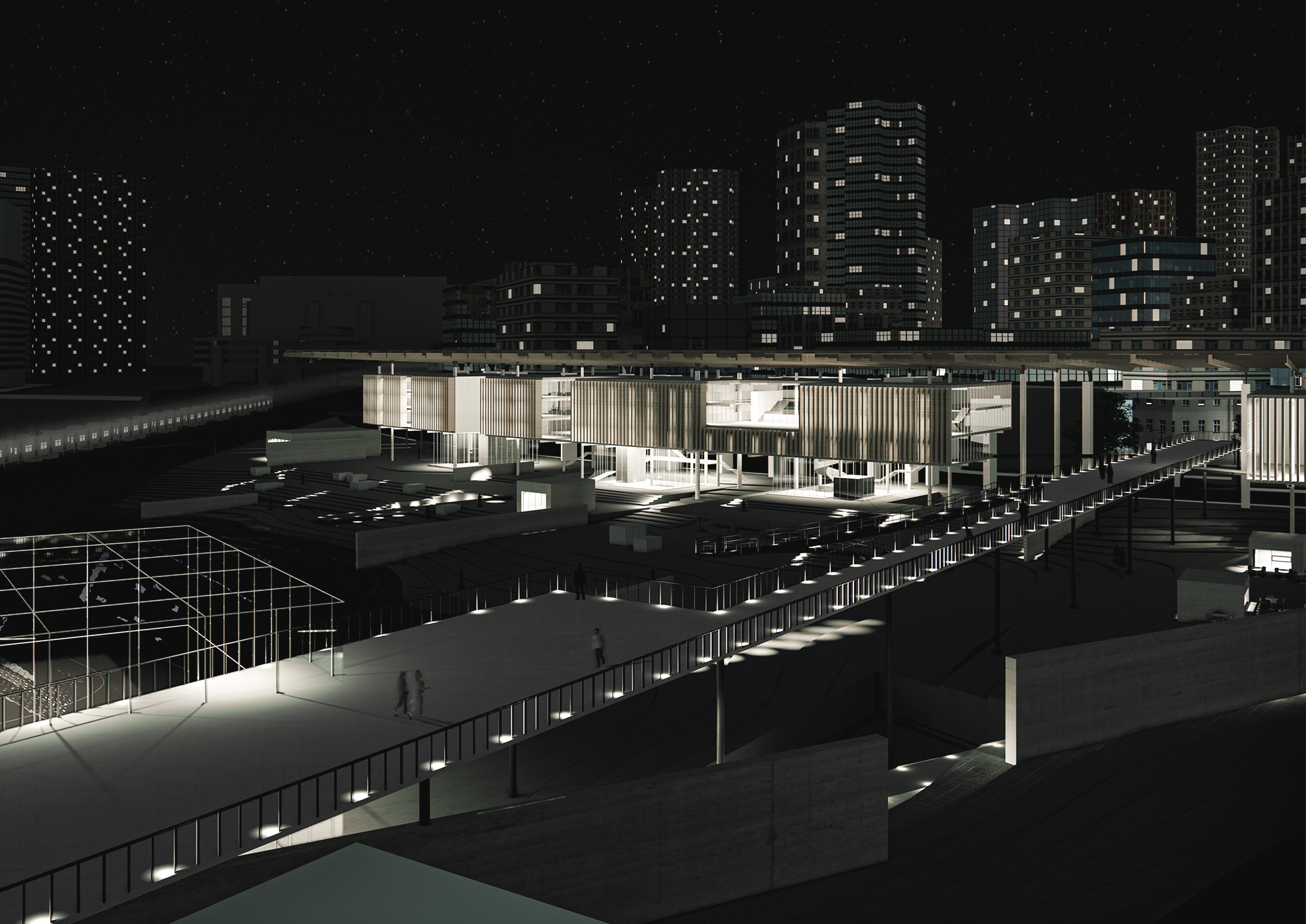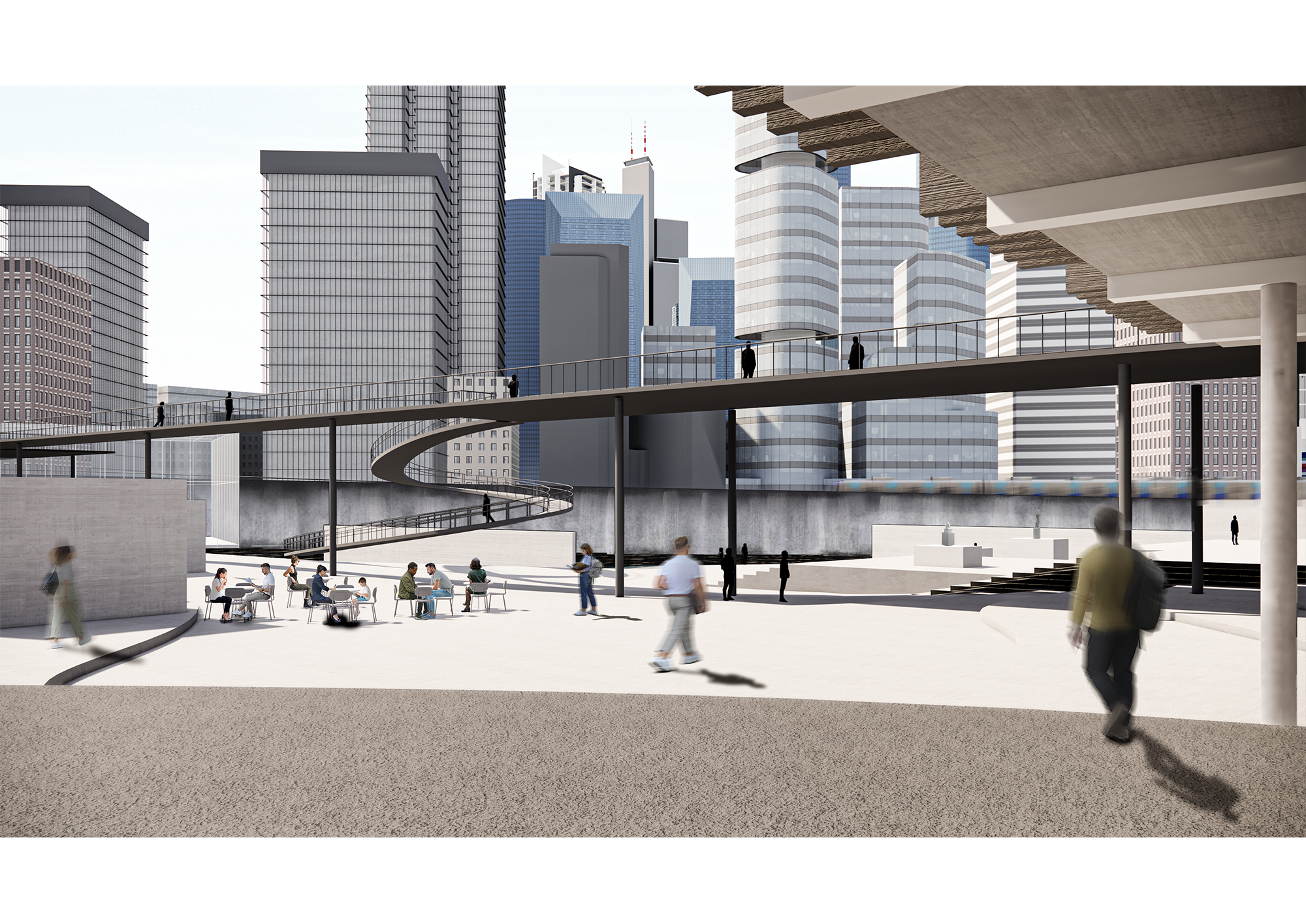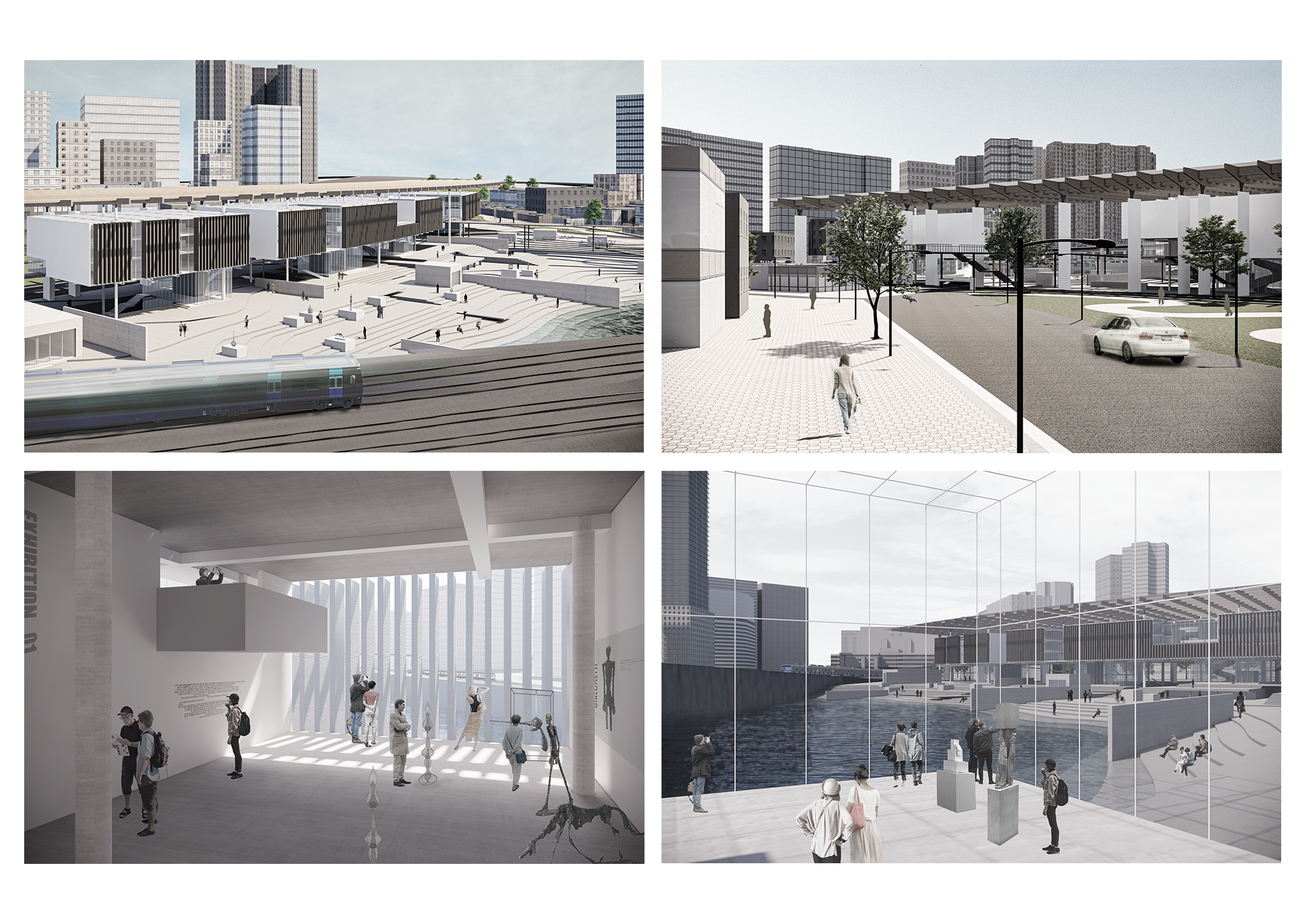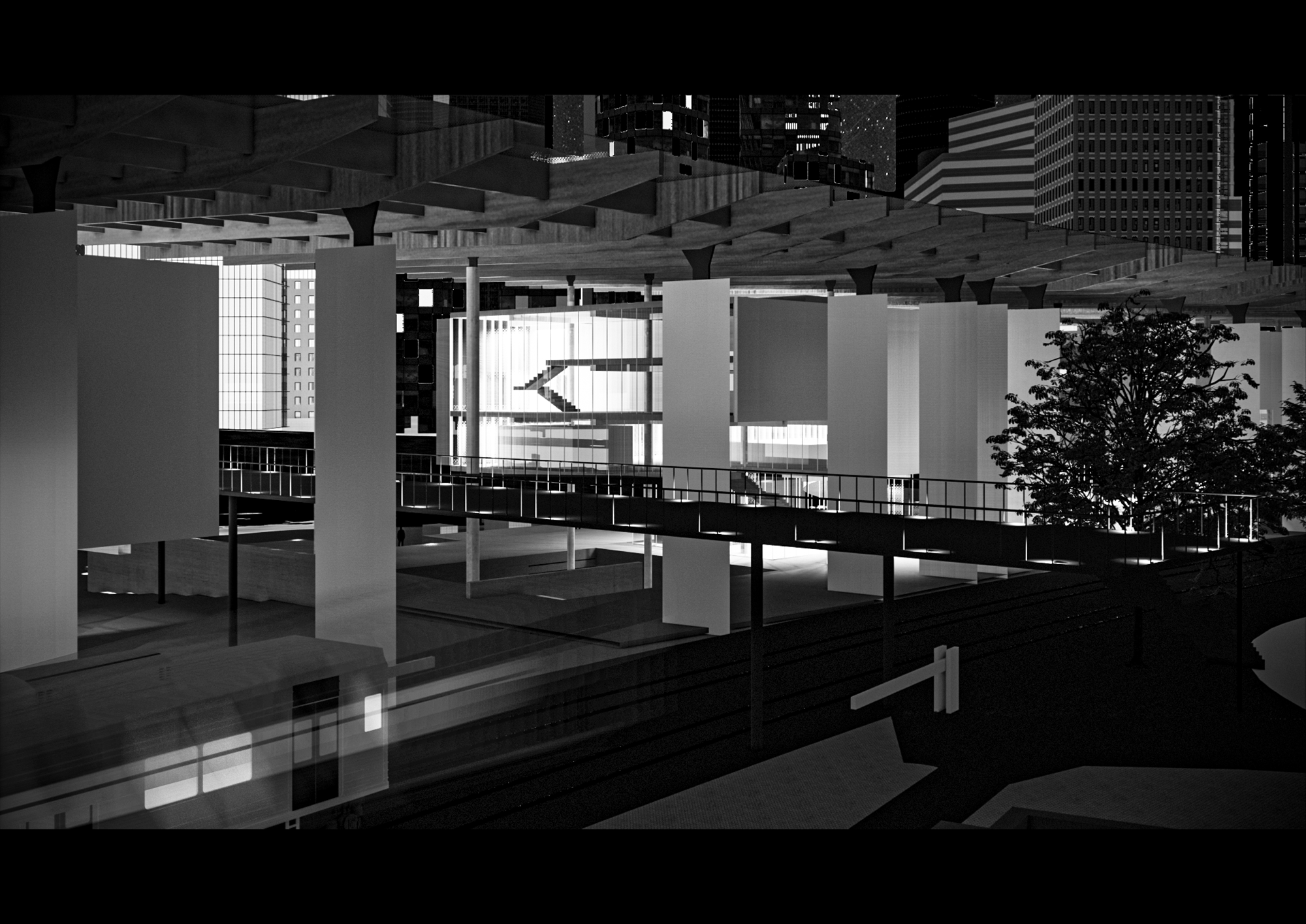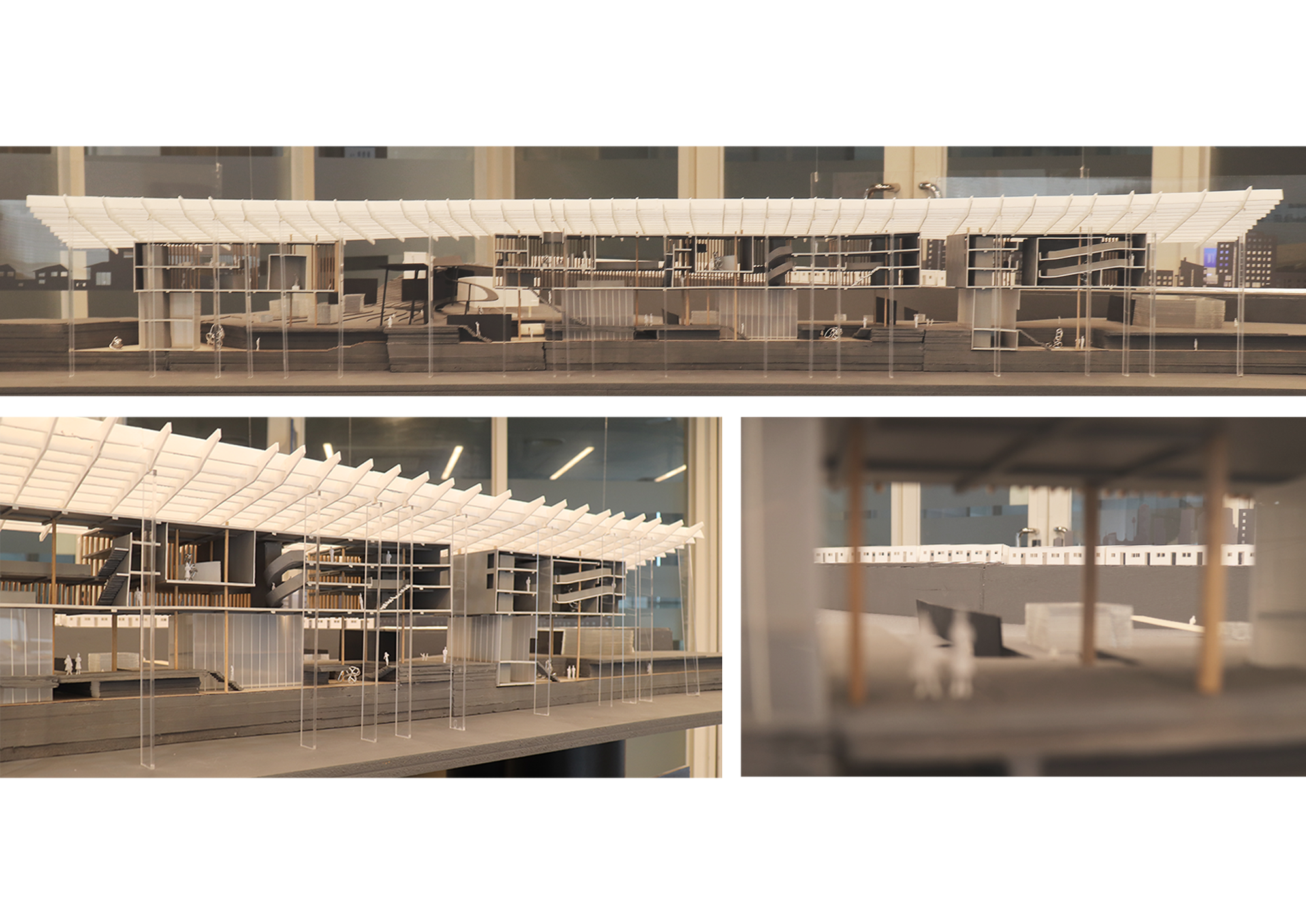Movement Prism: 무채색 이동에서 도시 스펙트럼으로
철도는 연결을 위해 탄생했지만 결국 무언가를 단절한다는 점에서 모순적이다. 높게 솟은 방음벽은 철로의 양쪽뿐 아니라 열차 안과 밖의 사람이 한 도시 안에서도 다른 세계를 살게 한다. 서울시는 지역 단절에 대한 해답으로 철도의 지하화를 추진하고 있으나, 이는 이동이 무미건조한 진공의 과정임을 전제로 할 뿐 아니라 가속하는 행위이다. 또한 상상력이 결핍된 지하화는 자본주의의 압력에 의해 업무지구와 아파트 같은 천편일률적인 도시 경관을 재생산한다.
이 프로젝트는 철도와 도시가 만나는 새로운 방법을 질문한다. 현존하는 지상철 구간 곳곳에 강렬한 도시경관을 심고 이를 철도의 속도로 연속하여 경험할 수 있다면, 도시 속 이동은 더 이상 진공의 과정이 아닌 새로운 도시의 스펙트럼을 생산하는 매개체가 된다.
용산역 주변이 국제업무지구와 아파트 단지로 개발되는 것은 시기의 문제일 뿐 거의 확실해진 상황이다. 그 한가운데에 철로로 둘러싸인 삼각형 땅이 있다. 과거의 개발 논리에서 이곳은 접근성과 소음 때문에 낙후될 수밖에 없는 도시 섬이었으나, 역이 아닌 철로가 공간의 중심이 될 수 있다면 이 땅의 새로운 잠재력이 드러난다.
서로 다른 속도로 접근하는 두 철도는 같은 공간을 다르게 인식한다. 건물에 인접하여 곡선으로 들어오는 경의중앙선은 저층부의 기둥, 면, 볼륨이 겹쳐져 만드는 근경의 리듬을 경험한다. 직선으로 빠르게 진입하는 경부선은 고층부의 매스와 캐노피가 이루는 원경의 경관을 체험한다. 또한 경부선 아래로 흐르는 폭포는 사이트 내의 호수와 건너편 국제업무지구의 빌딩숲, 그 사이의 질주하는 철도를 하나의 장면으로서 시각적으로 연결하는 장치이다. 사람과 철도의 움직임으로 가득 찬 삼각형 공간은 진실로 현재에 있는 도시를 비추는 프리즘이다.
Railways were created for connectivity but are contradictory in that they eventually cut off something. High-rise soundproof walls make people inside and outside trains as well as on both sides of the railroad live in different worlds in one city. The Seoul city government is pushing for the undergrounding of railways as an answer to regional disconnection, but this is an act of accelerating as well as presupposing that movement in city is a dry vacuum process. Imagination-deficient undergrounding also reproduces a dull urban landscape, such as work districts and apartments, under pressure from capitalism.
This project asks for new ways for railways and cities to meet. If intense urban landscapes can be planted throughout existing ground railways and experienced consecutively, movement is no longer a vacuum process, but a medium for producing new urban spectra.
It is only a matter of timing and almost certain that the area around Yongsan Station will be developed into an international business district and an apartment complex. In the middle of it is a triangular land surrounded by railroads. In the past development paradigm, it was an urban island that had no choice but to be underdeveloped due to lower accessibility and noise. But if the railway, not the station, could be the center of space, the new potential of the land is revealed.
The two railways approaching at different speeds perceive the same space differently. The Gyeong-ui Central Line, which enters adjacent to the building, experiences the rhythm created by overlapping columns, faces, and volumes on the lower floors. The Gyeongbu Line, which enters the straight line in higher speed, experiences the scenery of the mass and canopy at a distant view. The waterfall below the Gyeongbu Line acts as a visual connection between a lake within the site, a building forest in the International Business District across from it, and a speeding railway in between. This triangular space, filled with human and railway movements, is a prism that shows the city truly present.

